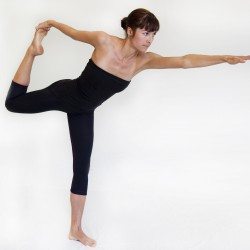While in Christchurch, New Zealand a few weeks back, I attended a horse dissection. All too briefly – it was happening while I was teaching, so after racing across the Canterbury Plain as the sun fell, I arrived at Bowen therapist Cath Gordon’s farm – www.equineinspiration.net – for about an hour of exploring horse anatomy, and then sat down to an in-your-lap home cooked (vegetarian) meal arranged by Sophie Hargreaves, a local bodyworker and student in my course. Everyone was so friendly and down-to-earth, as usual for Kiwis.
Surrounded by laughter and joshing, I got absorbed in conversation with an extraordinary woman – Sharon May-Davis.
But back out to the yard for a minute, let’s start with the dissection. It was the end of their first day, and only the front flank and shoulder had been exposed. What beautiful membranes a horse has! I expected to be able to dive right in and name things but the horse has surprising differences with human anatomy, and a one-for-one comparison would require more study than I’ve done. Clear and present in a more muscular but recognizable form was the rotator cuff, but the many relations between the shoulder and the neck and head – whew!

The other big surprise were the skin muscles. We’ve all seen horses and deer shiver their flanks to shake off flies or release fear, this horse’s skin muscles (the source of bacon in pigs, the muscle in the fat layer) was large, significant, and wrapped into the chest musculature like a huge sternalis all down the border between the Superficial Front Line and the Lateral Line. These thin but wide sinewy strips must help with the horse’s confirmation and stability, not just repel insects.

(Several days later, they sent this picture of the horse’s thoracolumbar fascia. Certainly fascial layers blended more in a horse than they do in humans. Sharon wrote me: “The fascia blends in an intimate format with the Gluteal fascia and cannot be discerned. This also applies to the cranial muscle Latissimus dorsi (right) and the caudal muscle Superficial gluteal (left). I am sure that you will be as chuffed as I was when looking at 2 determined people believing that they could win the battle. As always, the fascia wins!”
Yes, I’m chuffed (proud). You cannot see a horse canter – I fell in love with my wife watching her on her horse, one being cantering up the beach – oops, distracted – you cannot watch a canter without observing less of a ‘muscle control strategy’ and more of a ’fascial stiffness’ strategy (these terms from Dr Stu McGill). It is not surprising to me, given the lability of the horses hindquarters and the huge cantilever for the head, to see the fascial lines so well-played in the horse. But thank you, Sharon, for showing me the reality.)

Sharon speaks quickly, like a person with an urgent mission, a sentiment with which I empathize. She has the muddled accent and direct syntax of the inveterate traveler – I think she’s from Virginia, but Australia has grabbed her vowels. She is a world renowned Equine bodyworker and anatomist. She has made it to the top ranks of equine training and rehabilitation, working with race horses in many countries.
“And ye shall know the truth, and the truth shall set thee free.” Actually, what happens more often is the truth gets you embroiled in controversy. Many horse lines at the top of the kingly heap are so inbred that Sharon began to notice skeletal and joint anomalies in some of the lines, consistent abnormalities presumably genetic. She had the temerity to publish her findings in the likes of the Journal of Equine Science, with a specificity not appreciated by some quite powerful people. She continues to teach and to publish. http://thehorsesback.com/tag/sharon-may-davis
I wished I could have tackled her encyclopedic grasp of equine biomechanics, but it was an evening meal. Her dedication to the noble race of horses (as per Swift) is electrically palpable. Also to sharing her knowledge with the people who ride them and care for them and train them. She was traveling with her mother and her son, and though they were clearly a team, you could see the pressure of juggling family life, professional zeal, and dealing with nay-sayers in a male-dominated world – I found myself quietly trying to insert some of the ways I stay sane while keeping the home and road show going, and just sharing the difficulties of being the imperfect shepherd of a powerful set of ideas.

Her dissections are often sold out, and I can see why. Apparently, at the end, in another controversial move, she sits a rider atop the horse skeleton to show what happens to the horse’s spine when it accepts a rider, which shows graphically the best position for the horse for riding. If you are interested in such issues, I hope she will forgive me for publishing her email: maydavis@bigpond.com





